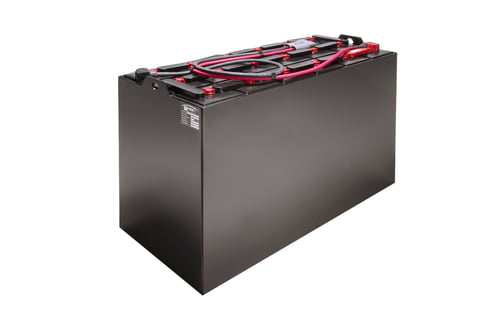
How Temperature Affects Forklift Batteries
When it comes to maintaining the efficiency and longevity of forklift batteries, temperature plays a crucial role. Understanding how temperature affects forklift batteries can mean the difference between optimal performance and premature failure. In this article, we’ll explore the relationship between temperature and forklift battery performance, identify key factors influencing that relationship, and provide practical tips for maintaining your batteries in various environments.
Understanding How Temperature Affects Forklift Batteries
Forklift batteries, primarily lead-acid or lithium-ion types, are sensitive to environmental changes. Their performance can significantly fluctuate based on temperature variations. So, why is this the case?
The Science Behind Battery Performance
At its core, a battery generates energy through chemical reactions. In lead-acid batteries, this involves the conversion of lead dioxide (PbO2) and sponge lead (Pb) into lead sulfate (PbSO4) when discharging. The rate of these chemical reactions is heavily influenced by temperature.
High Temperatures: What Happens?
- Accelerated degradation: Elevated temperatures can hasten the wear-and-tear process on internal components.
- Drying out electrolytes: Excessive heat leads to faster evaporation of water in electrolyte solutions, which can damage battery plates.
Thermal Runaway: This phenomenon occurs when batteries overheat due to excessive charging or discharging rates. It can result in catastrophic failures, including fires or explosions.

Reduced Lifespan: Operating forklifts in high-temperature environments can reduce battery lifespan significantly — potentially by up to 50%.
Low Temperatures: The Flip Side
Conversely, low temperatures also pose challenges:
- This results in decreased efficiency and reduced power output.
- Cold temperatures may cause batteries to deliver only 60-70% of their rated capacity.
Increased Internal Resistance: Lower temperatures increase resistance within the battery, which translates to poor performance during peak operational hours.
Risk of Freezing: For some types of batteries, particularly those with lower capacities or improper maintenance, extreme cold can freeze the electrolyte solution, leading to irreversible damage.
Temperature Ranges for Optimal Performance
To maximize forklift battery efficiency:
- Ideal operating temperatures range from 60°F to 80°F (15°C to 27°C).
- Temperature fluctuations outside this range require proactive management strategies.
| Temperature Range | Effect on Battery Performance | |-------------------|-------------------------------| | Below 32°F (0°C) | Reduced capacity; risk of freezing | | 32°F - 60°F (0°C - 15°C)| Noticeable decrease in efficiency | | 60°F - 80°F (15°C - 27°C)| Optimal performance | | Above 80°F (27°C) | Increased degradation; risk of thermal runaway |
Practical Strategies for Battery Maintenance Based on Temperature
Now that we understand how temperature affects forklift batteries let’s discuss effective ways 24 volt flat plate forklift batteries to maintain them under 12 volt flat plate forklift batteries varying conditions.
Tips for Managing High Temperatures
Proper Ventilation: Ensure that your charging area is well-ventilated to dissipate heat generated during charging cycles.
Regular Maintenance Checks: Frequently inspect electrolyte levels and top them off with distilled water when necessary to prevent drying out.
Use Cooling Systems: Employ cooling systems or air conditioning in areas where forklifts operate under high heat conditions.
Charge During Cooler Hours: If possible, schedule charging during cooler parts of the day or night.
Inspect Connections Regularly: Poor connections can generate heat due to resistance; ensure all connections are clean and tight.
Best Practices for Low Temperatures
Insulation Solutions: Use insulation wraps or blankets specifically designed for batteries during winter months.
Preconditioning Batteries: If possible, preheat the battery before use in extremely cold environments using specialized heaters.
Use Quality Chargers: Invest in smart chargers that adjust charging rates based on ambient temperature conditions.
Limit Idle Times: Keep idle times minimal; frequent operation helps maintain battery warmth through regular use.
Store Properly When Not In Use: If a forklift isn’t going to be used for an extended period during winter months, store it indoors if possible.
Frequently Asked Questions About Forklift Batteries and Temperature
How does high temperature affect forklift battery life? High temperatures accelerate degradation and chemical reactions within the battery leading to potential overheating issues and reduced overall lifespan.
What is thermal runaway in forklift batteries? Thermal runaway is a dangerous condition where excessive heat builds up within a battery leading to rapid deterioration or even explosions if not controlled.
Can cold weather freeze my forklift battery? Yes! Extremely low temperatures can freeze some types of forklift batteries if they’re not properly maintained or insulated.
What’s the ideal operating temperature range for forklift batteries? The optimal operating temperature range is between 60°F to 80°F (15°C to 27°C).
How often should I check my forklift battery? Regular checks should be performed at least monthly; however, more frequent inspections are advisable in extreme weather conditions.
Are there specific chargers designed for different temperatures? Yes! Smart chargers adapt their operations based on ambient temperatures ensuring safe charging regardless of external conditions.
Conclusion
Understanding how temperature affects forklift batteries equips you with knowledge vital for maintaining operational efficiency and longevity of your equipment. By implementing practical strategies tailored toward both high and low-temperature scenarios, you not only enhance productivity but also safeguard your investment against costly repairs or replacements down the line.
Always remember — taking care of your forklift batteries means taking care of your business! So don’t overlook those little details; they make all the difference when it comes down to performance under pressure!
